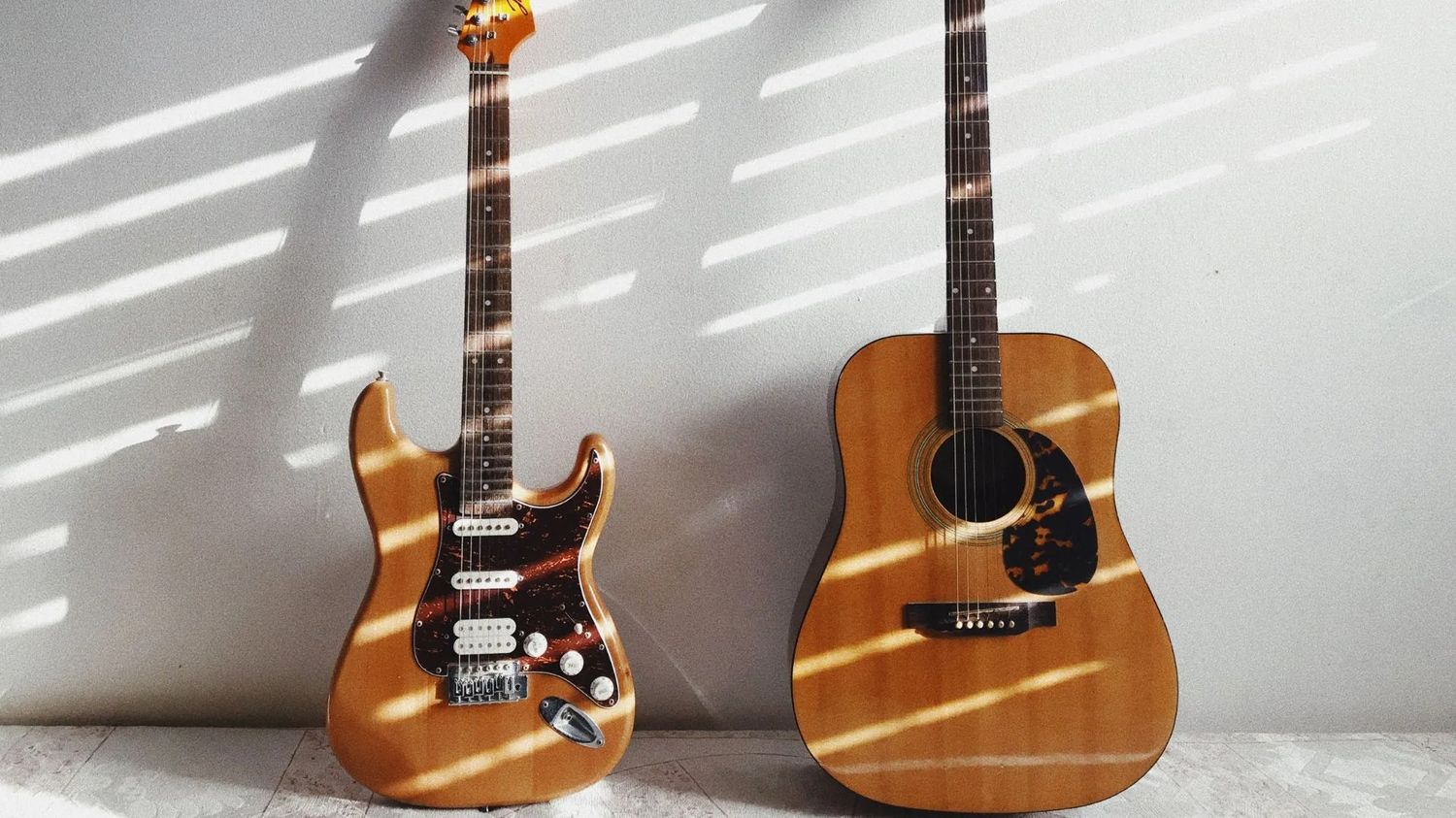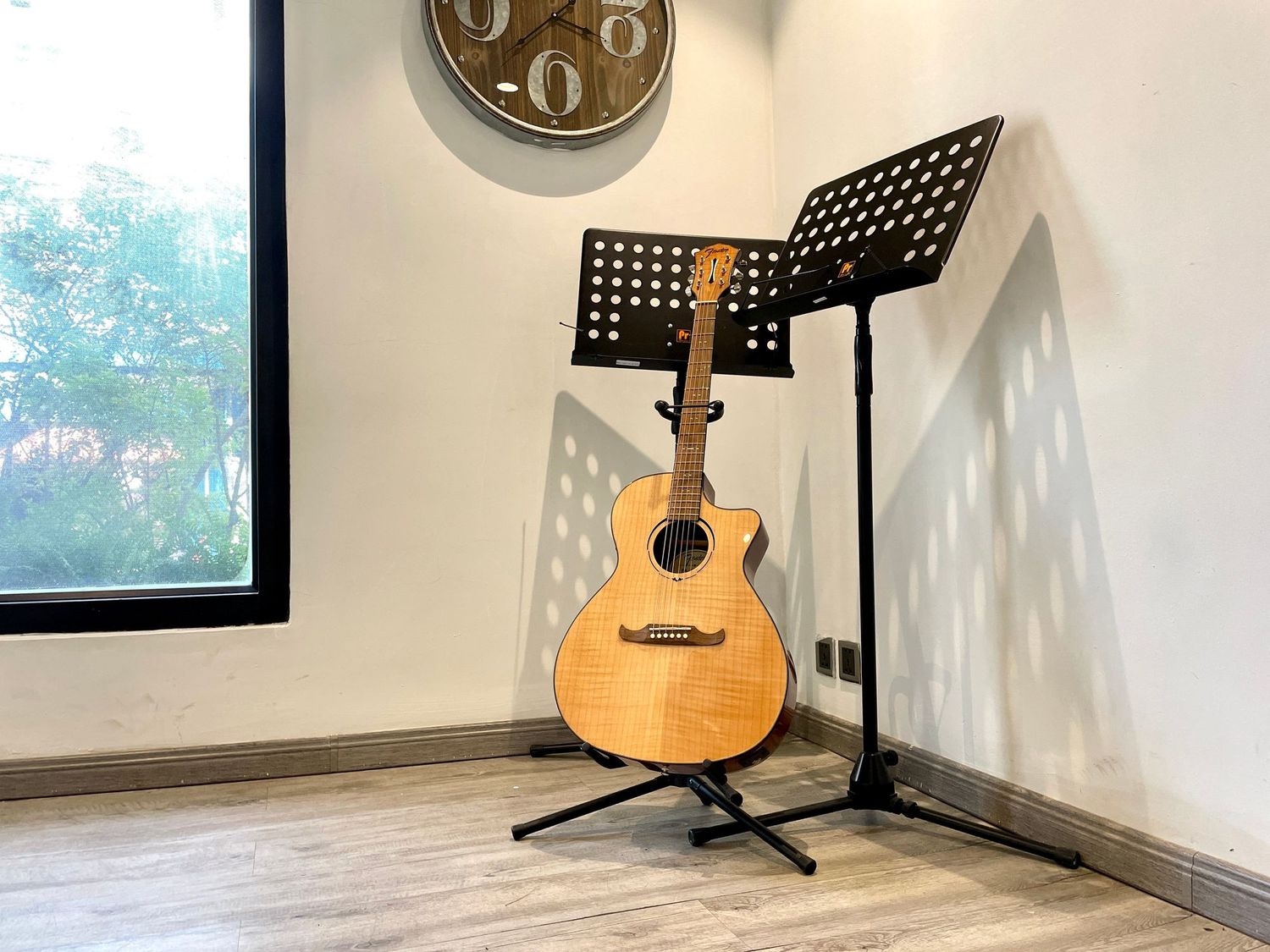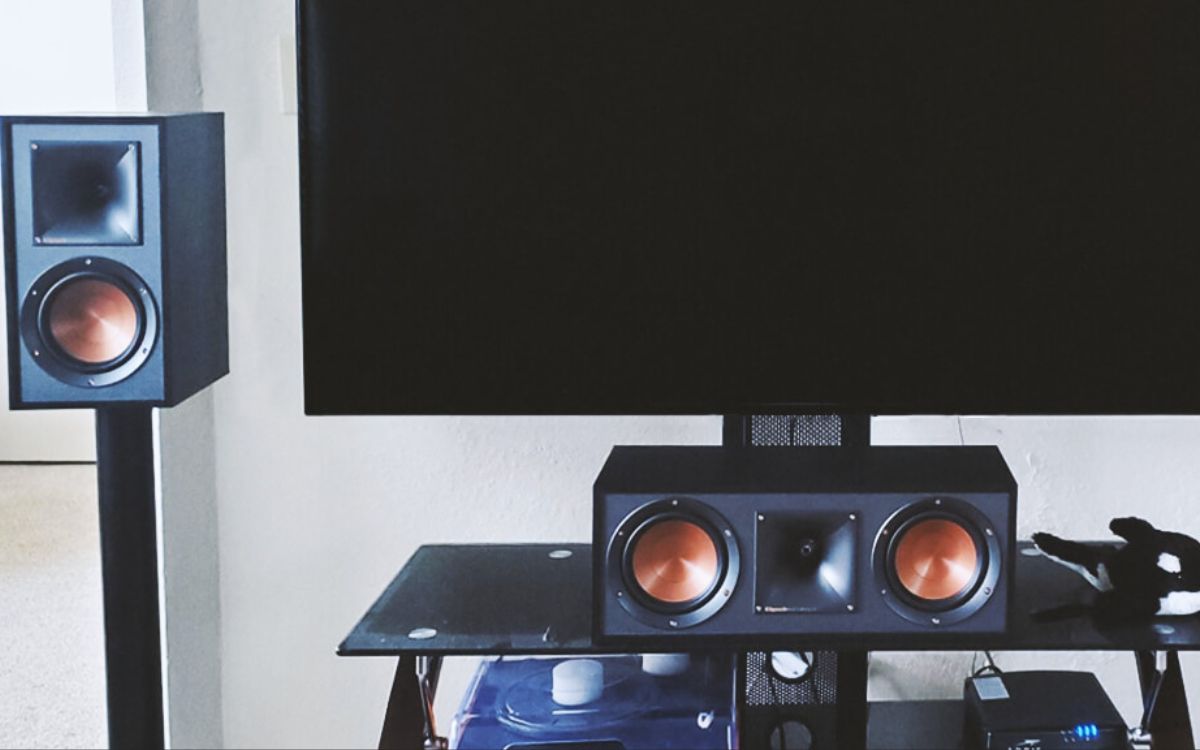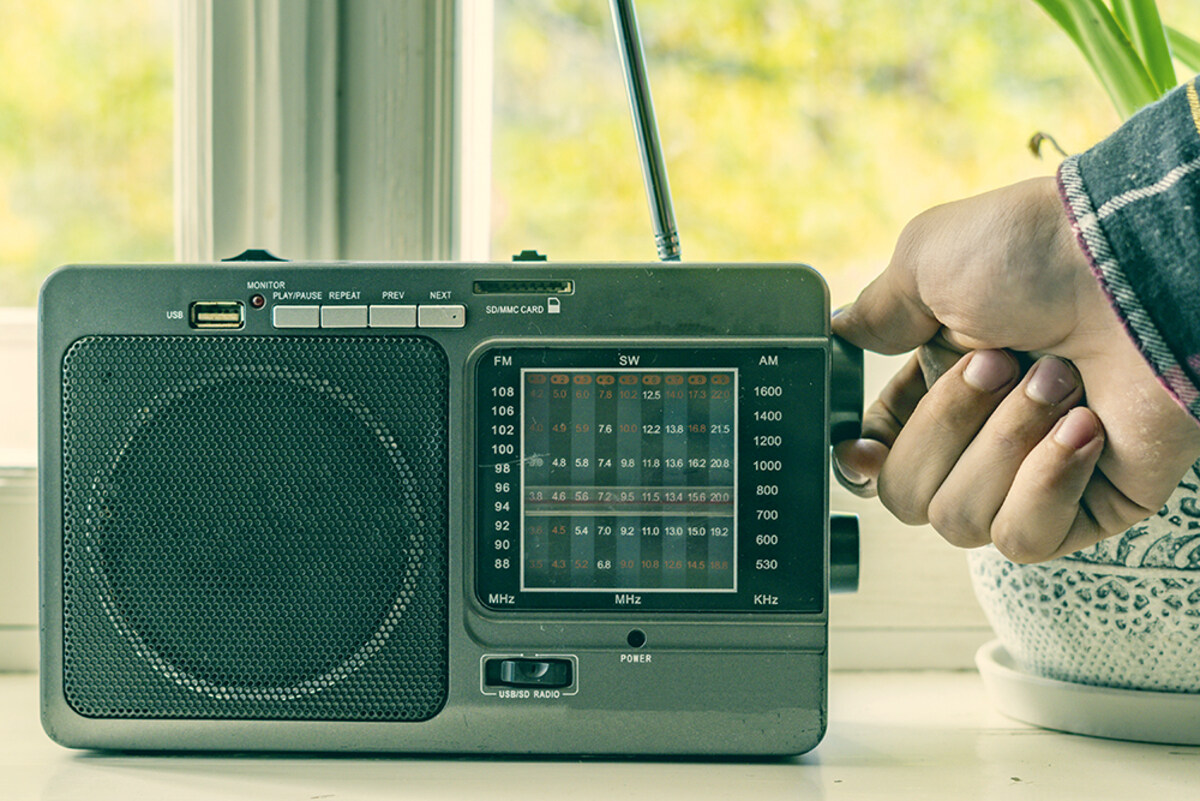Home>Production & Technology>Acoustic>Why Does My Electric Guitar Sound Like An Acoustic
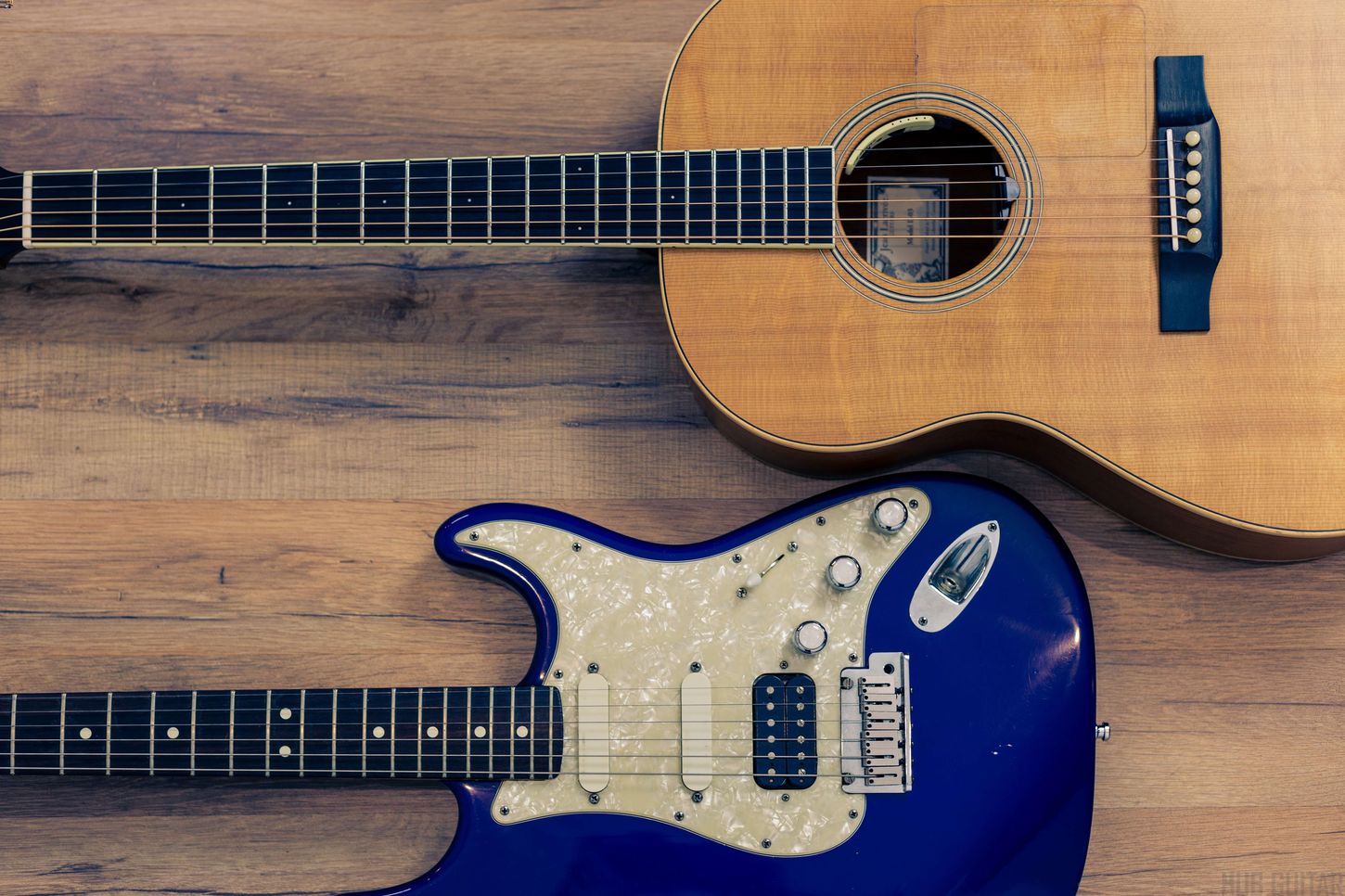

Acoustic
Why Does My Electric Guitar Sound Like An Acoustic
Published: March 12, 2024
Discover the reasons why your electric guitar may sound like an acoustic and how to address this issue. Learn how to achieve the desired acoustic or electric guitar sound.
(Many of the links in this article redirect to a specific reviewed product. Your purchase of these products through affiliate links helps to generate commission for AudioLover.com, at no extra cost. Learn more)
Table of Contents
Introduction
Have you ever plugged in your electric guitar, strummed a few chords, and noticed that it sounds surprisingly like an acoustic guitar? It's a common experience that can leave guitarists scratching their heads and wondering what's causing this unexpected transformation in sound.
The phenomenon of an electric guitar sounding like an acoustic one can be both perplexing and intriguing. While electric guitars are designed to produce a distinctively different sound from acoustic guitars, there are instances where the lines between the two become blurred, leading to a hybrid sound that captures the warmth and resonance of an acoustic instrument.
In this article, we'll delve into the fascinating world of electric and acoustic guitars, exploring the reasons behind this intriguing occurrence. By understanding the factors at play, you'll gain valuable insights into how to harness and control the sonic characteristics of your electric guitar, ultimately expanding your creative possibilities as a musician.
So, let's embark on this sonic journey and unravel the mysteries behind why your electric guitar might unexpectedly sound like an acoustic one.
Difference in Sound
The distinction between the sound of an electric guitar and an acoustic guitar is fundamental to the essence of these two instruments. When we think of an electric guitar, we envision the raw power of amplified sound, with its characteristic sustain and potential for distortion. On the other hand, an acoustic guitar evokes images of natural resonance, warm tonal qualities, and the intimate connection between the player and the instrument.
The sound of an electric guitar is heavily reliant on electronic amplification, often with the aid of effects pedals and amplifiers. This results in a versatile range of tones, from clean and crisp to heavily distorted, making it a staple in various genres such as rock, blues, and jazz. In contrast, the acoustic guitar produces its sound acoustically, relying on the vibration of the strings to resonate through the body of the instrument and create a rich, organic sound that is often associated with folk, country, and singer-songwriter styles.
The sonic differences between these two types of guitars are not only evident in their tonal characteristics but also in their playing techniques. Electric guitars are often played with a pick and are conducive to techniques such as bending, tapping, and palm muting, which contribute to their distinctive sound. Acoustic guitars, on the other hand, are frequently played with fingers, allowing for techniques like fingerpicking and percussive strumming, which accentuate the instrument's natural resonance and dynamic range.
However, despite these inherent disparities, there are instances where an electric guitar may unexpectedly exhibit qualities reminiscent of an acoustic guitar. This intriguing occurrence can manifest in various ways, such as a warmer and more rounded tone, enhanced resonance, or a subtle "woody" quality that echoes the characteristics of an acoustic instrument. Understanding the factors that contribute to this sonic convergence can shed light on the versatility of the electric guitar and open up new avenues for sonic exploration and artistic expression.
In the next section, we will explore the possible causes behind this phenomenon, delving into the technical and environmental factors that can influence the sound of an electric guitar and bridge the sonic gap between electric and acoustic instruments.
Possible Causes
The unexpected transformation of an electric guitar's sound to resemble that of an acoustic guitar can be attributed to a myriad of factors, spanning technical, environmental, and artistic dimensions. Understanding these potential causes can provide valuable insights into the complex interplay of elements that shape the sonic identity of an electric guitar.
1. Pickup Selection and Positioning
The type and positioning of pickups on an electric guitar play a pivotal role in shaping its sound. Single-coil pickups are known for their bright and articulate tone, often associated with the classic sound of electric guitars. However, when positioned closer to the guitar's bridge, single-coil pickups can capture a sharper and more treble-focused sound, akin to the brighter tonal characteristics of an acoustic guitar. Additionally, the use of humbucker pickups, known for their warmer and fuller sound, can contribute to a more rounded and resonant tonal profile, reminiscent of an acoustic instrument.
2. Amplification and Effects
The choice of amplification and effects pedals can significantly influence the sonic output of an electric guitar. Utilizing clean or lightly overdriven amp settings, combined with minimal effects, can yield a more natural and organic sound that mirrors the acoustic realm. Furthermore, the incorporation of reverb and delay effects can introduce spatial depth and ambience, emulating the reverberant qualities often associated with acoustic environments.
3. Playing Technique and Dynamics
The manner in which a guitarist approaches playing the instrument can also impact its sonic characteristics. Employing fingerpicking techniques, gentle strumming, and nuanced dynamics can evoke the expressive qualities inherent in acoustic guitar playing, fostering a more organic and resonant sound. By adjusting the attack and release of notes, guitarists can emulate the subtle nuances and tonal complexity reminiscent of acoustic performances.
4. Environmental Factors
The acoustic properties of the performance environment can exert a profound influence on the perceived sound of an electric guitar. The reflective surfaces, room acoustics, and ambient noise present in a performance space can interact with the amplified sound of the electric guitar, imparting subtle tonal colorations and spatial characteristics that echo the immersive qualities of acoustic settings.
5. String Selection and Gauge
The choice of guitar strings, including their material and gauge, can contribute to the sonic convergence between electric and acoustic tonalities. Opting for phosphor bronze or silk and steel strings, commonly associated with acoustic guitars, can impart a mellower and warmer tonal quality to the electric guitar, blurring the sonic boundaries between the two instrument types.
By considering these potential causes, guitarists can gain a deeper appreciation for the multifaceted nature of sound production and manipulation, empowering them to harness the sonic versatility of the electric guitar and explore new sonic territories. This heightened awareness of the interplay between technical, environmental, and artistic elements can inspire creative experimentation and innovative approaches to sonic expression.
In the subsequent section, we will delve into actionable solutions that can be employed to harness and control the acoustic-like qualities of an electric guitar, offering practical insights for guitarists seeking to expand their sonic palette and artistic horizons.
Solutions
Harnessing and controlling the acoustic-like qualities of an electric guitar presents an intriguing opportunity for guitarists to expand their sonic palette and artistic horizons. By leveraging a combination of technical adjustments, creative exploration, and environmental considerations, guitarists can actively shape the sonic identity of their electric guitar, unlocking a diverse range of expressive possibilities. Here are actionable solutions that can be employed to navigate and harness the acoustic-like characteristics of an electric guitar:
-
Pickup Configuration and Adjustment: Experimenting with different pickup configurations and adjusting their positioning can yield significant variations in the tonal output of an electric guitar. By exploring the tonal characteristics of single-coil and humbucker pickups, as well as adjusting their proximity to the bridge or neck, guitarists can tailor the instrument's sound to evoke acoustic-like qualities, such as warmth, resonance, and tonal complexity.
-
Tonal Shaping and Effects: Delving into the realm of tonal shaping and effects manipulation can offer a wealth of sonic possibilities. Utilizing EQ adjustments to emphasize midrange frequencies, incorporating subtle compression to enhance dynamics, and integrating ambient effects such as reverb and delay can contribute to the creation of a more organic and spatially immersive sonic landscape, akin to the acoustic realm.
-
Dynamic Playing Techniques: Embracing dynamic playing techniques, such as fingerpicking, hybrid picking, and nuanced strumming, can imbue the electric guitar with expressive qualities reminiscent of acoustic performances. By varying the attack and release of notes, as well as exploring the instrument's dynamic range, guitarists can infuse their playing with the nuanced tonal complexity and emotive qualities associated with acoustic guitar performances.
-
String Selection and Material: The choice of guitar strings can exert a profound influence on the instrument's tonal characteristics. Experimenting with different string materials, such as phosphor bronze or silk and steel, can impart a mellower and warmer tonal quality to the electric guitar, blurring the sonic boundaries between electric and acoustic tonalities. Additionally, exploring varied string gauges can further tailor the instrument's responsiveness and tonal profile to align with acoustic-like qualities.
-
Environmental Considerations: Acknowledging the impact of the performance environment on the instrument's sound is crucial. By optimizing the acoustic properties of the performance space, such as adjusting room acoustics, minimizing ambient noise, and leveraging natural reverberation, guitarists can create an immersive sonic environment that enhances the acoustic-like qualities of the electric guitar, fostering a more organic and resonant sonic experience.
By embracing these solutions, guitarists can embark on a sonic exploration that transcends traditional boundaries, offering a rich tapestry of expressive possibilities that blur the lines between electric and acoustic sonic realms. This journey of sonic discovery empowers guitarists to craft a unique sonic identity, characterized by the fusion of electric energy and acoustic warmth, ultimately expanding the horizons of artistic expression and musical innovation.
Conclusion
In the realm of music and sonic artistry, the unexpected convergence of an electric guitar's sound with that of an acoustic instrument serves as a testament to the boundless potential for sonic exploration and creative expression. The journey of unraveling the mysteries behind why an electric guitar might unexpectedly sound like an acoustic one has unveiled a tapestry of technical, environmental, and artistic factors that intertwine to shape the sonic identity of the instrument.
As we navigate the intricate landscape of sound production and manipulation, we have discovered that the pickup selection and positioning, amplification and effects choices, playing techniques, environmental influences, and string selection all play pivotal roles in shaping the sonic convergence between electric and acoustic tonalities. This multifaceted interplay of elements has illuminated the versatility of the electric guitar, transcending its traditional sonic boundaries and offering a rich spectrum of expressive possibilities that blur the lines between distinct instrument types.
By delving into actionable solutions, such as pickup configuration and adjustment, tonal shaping and effects manipulation, dynamic playing techniques, string selection, and environmental considerations, guitarists are empowered to actively shape and harness the acoustic-like qualities of their electric guitars. This journey of sonic exploration transcends conventional norms, inviting guitarists to embrace a fusion of electric energy and acoustic warmth, ultimately expanding the horizons of artistic expression and musical innovation.
As we conclude this sonic odyssey, it becomes evident that the unexpected transformation of an electric guitar's sound to resemble that of an acoustic instrument is not merely a curious anomaly, but a gateway to a realm of sonic possibilities that beckons creative minds to embark on a journey of discovery and innovation. The convergence of electric and acoustic sonic realms offers a fertile ground for artistic exploration, inviting guitarists to craft a unique sonic identity that defies categorization and embraces the rich tapestry of sonic diversity.
In the ever-evolving landscape of music, where boundaries are continually challenged and redefined, the enigmatic allure of an electric guitar sounding like an acoustic one serves as a poignant reminder of the limitless potential for sonic expression. As we continue to explore the frontiers of sound, let us embrace the unexpected, celebrate the convergence of sonic realms, and embark on a sonic odyssey that transcends conventions, paving the way for a new era of sonic innovation and artistic discovery.


